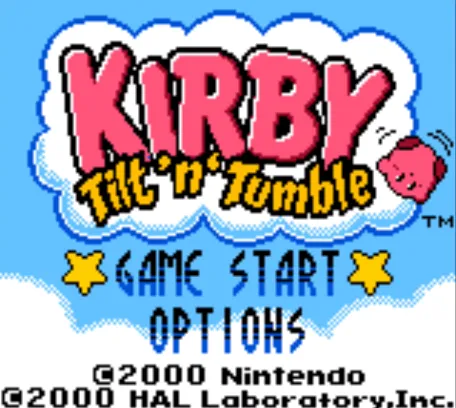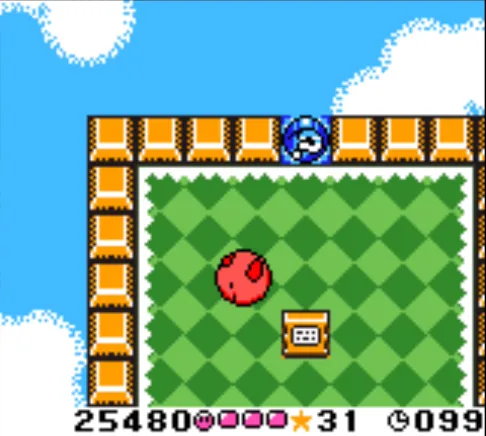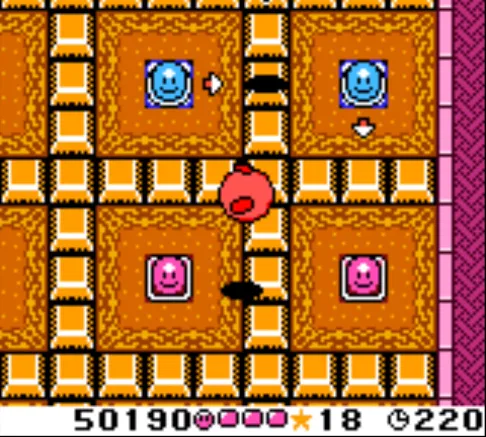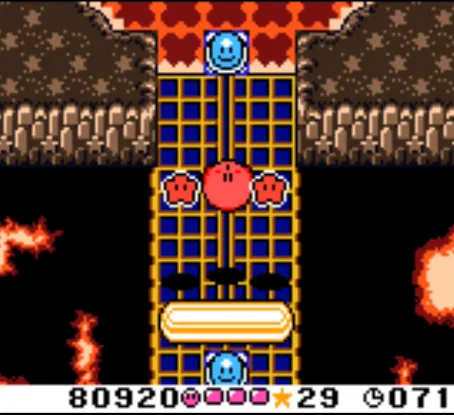

Have you ever wondered how people came up with games with motion detection capabilities that detect movements you make on your controller or phone? While the habit of, for example, turning your controller when you play a racing game even if it doesn't do anything is probably something that has been around for many, having it intentionally and actually present in a game has been something you could only imagine with consoles like the Nintendo Wii (which promoted doing things like this with the Wiimote) and smartphones with their motion sensors.
However, while you would see attempts to bring your body movements into games with arcade games (like SEGA's Hang On, which had a motorcycle-shaped cockpit that you drove around on) or peripherals like the SEGA Activator (which...wasn't very practical, just innovative in its idea), it would be Nintendo itself that tried to make a game with accelerometers for the Game Boy Color, working so that by turning your console, you would move Kirby in the game.

This was thanks to a special cartridge that had the sensors built in (rather than being a built-in feature of the console), a technique that would be reused for games like WarioWare Twisted and Yoshi Topsy Turvy for the Game Boy Advance. In any case, its innovative mechanics were the first thing that caught your attention as the game gave you as the first screen a warning to hold the console at a flat angle to calibrate. From then on what followed was to roll the pink space ball towards the goal.

To move, you tilt the console (or phone, if you play it on emulator like I did; you'd need the full MyBoy) to make Kirby roll, and do an upward shake to make him jump. Otherwise, it's all in the level design and things you can run into, and the levels can take a while but have checkpoints every so often. You may also encounter occasional bonus levels.

Although it looks like it doesn't have many levels, each one lasts a few minutes, and there is always a boss waiting for you after a certain amount of time. And in any case, for the time and console on which this idea was developed, it's still quite innovative in concept, and fun enough to distract for a while in practice. While it might be possible to emulate this on controller or keyboard with an emulator that has support for setting that up, I'd recommend playing this exclusively with an emulator that has support for using the phone's accelerometer in this game, and then you'll get the experience it was designed for.


English translation with DeepL. All screenshots were captured by myself.
Español
¿Alguna vez se han preguntado de como se le ocurrió a la gente hacer juegos con capacidades de detectar movimientos que hagas en tu mando o teléfono? Mientras que la costumbre de, por ejemplo, girar el mando cuando juegas algo de carreras aún si no hace nada, probablemente es algo que ha estado ahí para muchos, que esté presente de forma intencional y real en un juego ha sido algo que podrían solo imaginarse con consolas como la Nintendo Wii (que promocionaron hacer cosas como esta con los Wiimote) y los teléfonos inteligentes con sus sensores de movimientos.
Sin embargo, aunque se verían intentos para traer movimientos de tu cuerpo a los juegos con juegos arcade (como Hang On de SEGA, que tenía una cabina en forma de moto con la que conducías) o periféricos como el SEGA Activator (que...no tenía mucho de práctico, solo de inovador en su idea), sería la propia Nintendo que intentó hacer un juego con acelerómetros para la Game Boy Color, funcionando de manera que al girar tu consola, moverías a Kirby en el juego.

Esto fue gracias a un cartucho especial que traía los sensores integrados (en vez de ser una función integrada de la consola), técnica que sería reutilizada para juegos como WarioWare Twisted y Yoshi Topsy Turvy para la Game Boy Advance. En cualquier caso, su inovadora mecánica era lo primero que llamaba la atención ya que el juego te daba como primera pantalla un aviso de mantener la consola en un ángulo plano para calibrar. De ahí en adelante lo que seguía era rodar a la bola rosada espacial hacia la meta.

Para moverte, inclinas la consola (o teléfono, si lo juegas en emulador como yo lo hice; necesitarías el MyBoy completo) para hacer que Kirby ruede, y hacer una sacudida hacia arriba para hacer que salte. Del resto, todo está en el diseño de niveles y cosas con las que te puedes encontrar, y los niveles pueden tomar su tiempo pero tienen puntos de control cada tanto. También puedes encontrarte con niveles bonus ocasionales.

Aunque tiene pinta de no traer muchos niveles, cada uno dura unos cuantos minutos, y siempre te espera un jefe después de cierto tiempo. Y en cualqueir caso, para el tiempo y la consola en la que fue desarrollada esta idea, sigue siendo bastante inovadora en concepto, y lo suficiente divertida para distraer un rato en práctica. Mientras que podría ser posible emular esto en mando o teclado con un emulador que tenga soporte para configurar eso, recomendaría jugar eso exclusivamente con un emulador que tenga soporte para usar el acelerómetro del teléfono en este juego, y así tendrías la experiencia para la que fue diseñada.


Traducción al inglés hecha con DeepL. Todas las fotos capturadas por mí.